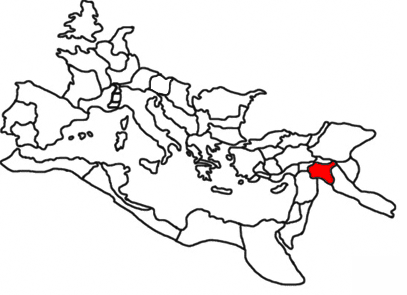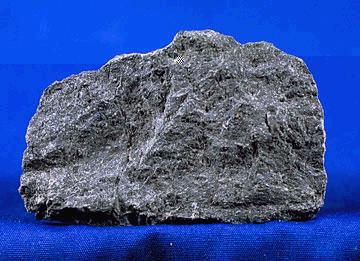|
Jebel Al-Lawz
Jabal al-Lawz () is a mountain located in northwest Saudi Arabia, near the Jordanian border, above the Gulf of Aqaba at above sea level. The name means 'mountain of almonds'. The peak of Jabal al-Lawz, consists of a light-colored, calc-alkaline granite that is intruded by rhyolite and andesite dikes which generally trend eastward. Between 1300 and 2200 meters elevation, Jabal al-Lawz has relict Mediterranean woodlands of ''Juniperus phoenicea'', with an understory of ''Achillea santolinoides, Artemisia sieberi'', and ''Astracantha echinus'' subsp. ''arabica''. In discussions about the location of biblical Mount Sinai, Jabal Maqlā ('Burnt Mountain') is often believed to be ''Jabal al-Lawz'' by various authors such as Bob Cornuke, Ron Wyatt, and Lennart Möller as shown by local and regional maps and noted by other investigators. In contrast to the real Jabal al-Lawz, the summit of Jabal Maqlā consists mainly of dark-colored hornfels derived from metamorphosed volcanic rocks ... [...More Info...] [...Related Items...] OR: [Wikipedia] [Google] [Baidu] |
Ultra Prominent Peak
An ultra-prominent peak, or ultra for short, is a mountain summit with a topographic prominence of or more; it is also called a P1500. The prominence of a peak is the minimum height of climb to the summit on any route from a higher peak, or from sea level if there is no higher peak. There are approximately 1,500 such peaks on Earth. Some well-known peaks, such as the Matterhorn and Eiger, are not ultras because they are connected to higher mountains by high cols and thus do not achieve enough topographic prominence. The term "ultra" originated with earth scientist Steve Fry, from his studies of the prominence of peaks in Washington (state), Washington in the 1980s. His original term was "ultra major mountain", referring to peaks with at least of prominence. Distribution Currently, over 1,500 ultras have been identified above sea level: 654 in Asia, 357 in North America, 209 in South America, 119 in Europe (including 12 in the Caucasus), 84 in Africa, 54 in Oceania, and 39 in ... [...More Info...] [...Related Items...] OR: [Wikipedia] [Google] [Baidu] |
Hornfel
Hornfels is the group name for a set of contact metamorphic rocks that have been baked and hardened by the heat of intrusive igneous masses and have been rendered massive, hard, splintery, and in some cases exceedingly tough and durable. These properties are caused by fine grained non-aligned crystals with platy or prismatic habits, characteristic of metamorphism at high temperature but without accompanying deformation. The term is derived from the German word ''Hornfels'', meaning "hornstone", because of its exceptional toughness and texture both reminiscent of animal horns. These rocks were referred to by miners in northern England as Sharpening stone, whetstones. Most hornfels are fine-grained, and while the original rocks (such as sandstone, shale, slate and limestone) may have been more or less fissile owing to the presence of bedding or cleavage planes, this structure is effaced or rendered inoperative in the hornfels. Though many hornfels show vestiges of the original bedd ... [...More Info...] [...Related Items...] OR: [Wikipedia] [Google] [Baidu] |
Mountains Of Saudi Arabia
A mountain is an elevated portion of the Earth's crust, generally with steep sides that show significant exposed bedrock. Although definitions vary, a mountain may differ from a plateau in having a limited summit area, and is usually higher than a hill, typically rising at least above the surrounding land. A few mountains are isolated summits, but most occur in mountain ranges. Mountains are formed through tectonic forces, erosion, or volcanism, which act on time scales of up to tens of millions of years. Once mountain building ceases, mountains are slowly leveled through the action of weathering, through slumping and other forms of mass wasting, as well as through erosion by rivers and glaciers. High elevations on mountains produce colder climates than at sea level at similar latitude. These colder climates strongly affect the ecosystems of mountains: different elevations have different plants and animals. Because of the less hospitable terrain and climate, mountains te ... [...More Info...] [...Related Items...] OR: [Wikipedia] [Google] [Baidu] |
Nabataean Architecture
Nabatean architecture (Arabic: اَلْعِمَارَةُ النَّبَطِيَّةُ; al-ʿimarah al-nabatiyyah) refers to the building traditions of the Nabateans ( /ˌnæbəˈtiːənz/; Nabataean Aramaic: 𐢕𐢃𐢋𐢈 ''Nabāṭū''; Arabic: ٱلْأَنْبَاط ''al-ʾAnbāṭ''; compare Akkadian: 𒈾𒁀𒌅 ''Nabātu''; Ancient Greek: Ναβαταῖος; Latin: ''Nabataeus''), an ancient Arab people who inhabited northern Arabia and the southern Levant. Their settlements—most prominently the assumed capital city of Raqmu (present-day Petra, Jordan)—gave the name ''Nabatene'' (Ancient Greek: Ναβατηνή, ''Nabatēnḗ'') to the Arabian borderland that stretched from the Euphrates to the Red Sea. Their architectural style is notable for its temples and tombs, most famously the ones found in Petra. The style appears to be a mix of Mesopotamian, Phoenician, Hellenistic, and South Arabian influences modified to suit the Arab architectural taste. Petra, the ca ... [...More Info...] [...Related Items...] OR: [Wikipedia] [Google] [Baidu] |
Nabataeans
The Nabataeans or Nabateans (; Nabataean Aramaic: , , vocalized as ) were an ancient Arabs, Arab people who inhabited northern Arabian Peninsula, Arabia and the southern Levant. Their settlements—most prominently the assumed capital city of Raqmu (present-day Petra, Jordan)—gave the name ''Nabatene'' () to the Arabian borderland that stretched from the Euphrates to the Red Sea. The Nabateans emerged as a distinct civilization and political entity between the 4th and 2nd centuries BC, with Nabataean Kingdom, their kingdom centered around a loosely controlled trading network that brought considerable wealth and influence across the ancient world. Described as fiercely independent by contemporary Greco-Roman accounts, the Nabataeans were annexed into the Roman Empire by Emperor Trajan in 106 AD. Nabataeans' individual culture, easily identified by their characteristic finely potted painted ceramics, was adopted into the larger Greco-Roman culture. They converted to Christi ... [...More Info...] [...Related Items...] OR: [Wikipedia] [Google] [Baidu] |
List Of Mountains In Saudi Arabia
This is an (incomplete) list of mountains in Saudi Arabia. Peaks over 3,000 m Peaks over 2,500 m Highest peaks in the Hijaz Mountains Highest peaks in the Midian Mountains Highest peaks in the Tihamah Highest peaks in the Najd See also * Asir Mountains * Geography of Saudi Arabia * Geology of Saudi Arabia * Rakuba * Al-Dukhul and Hummel Mountains * Jildiyyah Mountain * List of volcanoes in Saudi Arabia * Shammar Mountains * Ubla mountains Notes * (*) These measurements are not exact. The shown heights are taken by ''Google Earth''. References Saudi Geological Survey Saudi Geological SocietyMinistry of Petroleum and Minerals Resources: Aerial Survey Department* GoogleEarth {{Asia topic, prefix=List of mountains of Saudi Arabia Mountains A mountain is an elevated portion of the Earth's crust, generally with steep sides that show significant exposed bedrock. Although definitions vary, a mountain may differ from a plateau in having a limited s ... [...More Info...] [...Related Items...] OR: [Wikipedia] [Google] [Baidu] |
Intrusive Rock
Intrusive rock is formed when magma penetrates existing rock, crystallizes, and solidifies underground to form ''Igneous intrusion, intrusions'', such as batholiths, dike (geology), dikes, Sill (geology), sills, laccoliths, and volcanic necks.Intrusive RocksIntrusive rocks accessdate: March 27, 2017.Igneous intrusive rocks, accessdate: March 27, 2017.Britannica.comintrusive rock , geology , Britannica.com accessdate: March 27, 2017. Intrusion is one of the two ways igneous rock can form. The other is extrusive rock, extrusion, such as a Types of volcanic eruptions, volcanic eruption or similar event. An intrusion is any body of intrusive igneous rock, formed from magma that cools and solidifies within the crust of the planet. In contrast, an ''extrusion'' consists of extrusive rock, formed above the surface of the crust. Some geologists use the term plutonic rock synonymously with intrusive rock, but other geologists subdivide intrusive rock, by crystal size, into coarse-grai ... [...More Info...] [...Related Items...] OR: [Wikipedia] [Google] [Baidu] |
Breccia
Breccia ( , ; ) is a rock composed of large angular broken fragments of minerals or Rock (geology), rocks cementation (geology), cemented together by a fine-grained matrix (geology), matrix. The word has its origins in the Italian language, in which it means "rubble". A breccia may have a variety of different origins, as indicated by the named types including sedimentary breccia, fault (geology), fault or tectonics, tectonic breccia, igneous breccia, Impact event, impact breccia, and Hydrothermal circulation, hydrothermal breccia. A megabreccia is a breccia composed of very large rock fragments, sometimes kilometers across, which can be formed by landslides, impact events, or caldera collapse. Types Breccia is composed of coarse rock fragments held together by cement or a fine-grained matrix. Like Conglomerate (geology), conglomerate, breccia contains at least 30 percent of gravel-sized particles (particles over 2mm in size), but it is distinguished from Conglomerate (geol ... [...More Info...] [...Related Items...] OR: [Wikipedia] [Google] [Baidu] |
Tuff
Tuff is a type of rock made of volcanic ash ejected from a vent during a volcanic eruption. Following ejection and deposition, the ash is lithified into a solid rock. Rock that contains greater than 75% ash is considered tuff, while rock containing 25% to 75% ash is described as ''tuffaceous'' (for example, ''tuffaceous sandstone''). A pyroclastic rock containing 25–75% volcanic bombs or volcanic blocks is called tuff breccia. Tuff composed of sandy volcanic material can be referred to as volcanic sandstone. Tuff is a relatively soft rock, so it has been used for construction since ancient times. Because it is common in Italy, the Romans used it often for construction. The Rapa Nui people used it to make most of the ''moai'' statues on Easter Island. Tuff can be classified as either igneous or sedimentary rock. It is usually studied in the context of igneous petrology, although it is sometimes described using sedimentological terms. Tuff is often erroneously called t ... [...More Info...] [...Related Items...] OR: [Wikipedia] [Google] [Baidu] |
Lava Flows
Lava is molten or partially molten rock (magma) that has been expelled from the interior of a terrestrial planet (such as Earth) or a moon onto its surface. Lava may be erupted at a volcano or through a fracture in the crust, on land or underwater, usually at temperatures from . The volcanic rock resulting from subsequent cooling is often also called ''lava''. A lava flow is an outpouring of lava during an effusive eruption. (An explosive eruption, by contrast, produces a mixture of volcanic ash and other fragments called tephra, not lava flows.) The viscosity of most lava is about that of ketchup, roughly 10,000 to 100,000 times that of water. Even so, lava can flow great distances before cooling causes it to solidify, because lava exposed to air quickly develops a solid crust that insulates the remaining liquid lava, helping to keep it hot and inviscid enough to continue flowing. Etymology The word ''lava'' comes from Italian and is probably derived from the Latin word ... [...More Info...] [...Related Items...] OR: [Wikipedia] [Google] [Baidu] |
Mafic
A mafic mineral or rock is a silicate mineral or igneous rock rich in magnesium and iron. Most mafic minerals are dark in color, and common rock-forming mafic minerals include olivine, pyroxene, amphibole, and biotite. Common mafic rocks include basalt, diabase and gabbro. Mafic rocks often also contain calcium-rich varieties of plagioclase feldspar. Mafic materials can also be described as ferromagnesian. History The term ''mafic'' is a portmanteau of "magnesium" and "ferric" and was coined by Charles Whitman Cross, Joseph P. Iddings, Louis V. Pirsson, and Henry Stephens Washington in 1912. Cross' group had previously divided the major rock-forming minerals found in igneous rocks into ''salic'' minerals, such as quartz, feldspars, or feldspathoids, and ''femic'' minerals, such as olivine and pyroxene. However, micas and aluminium-rich amphiboles were excluded, while some calcium minerals containing little iron or magnesium, such as wollastonite or apatite, were included in t ... [...More Info...] [...Related Items...] OR: [Wikipedia] [Google] [Baidu] |







